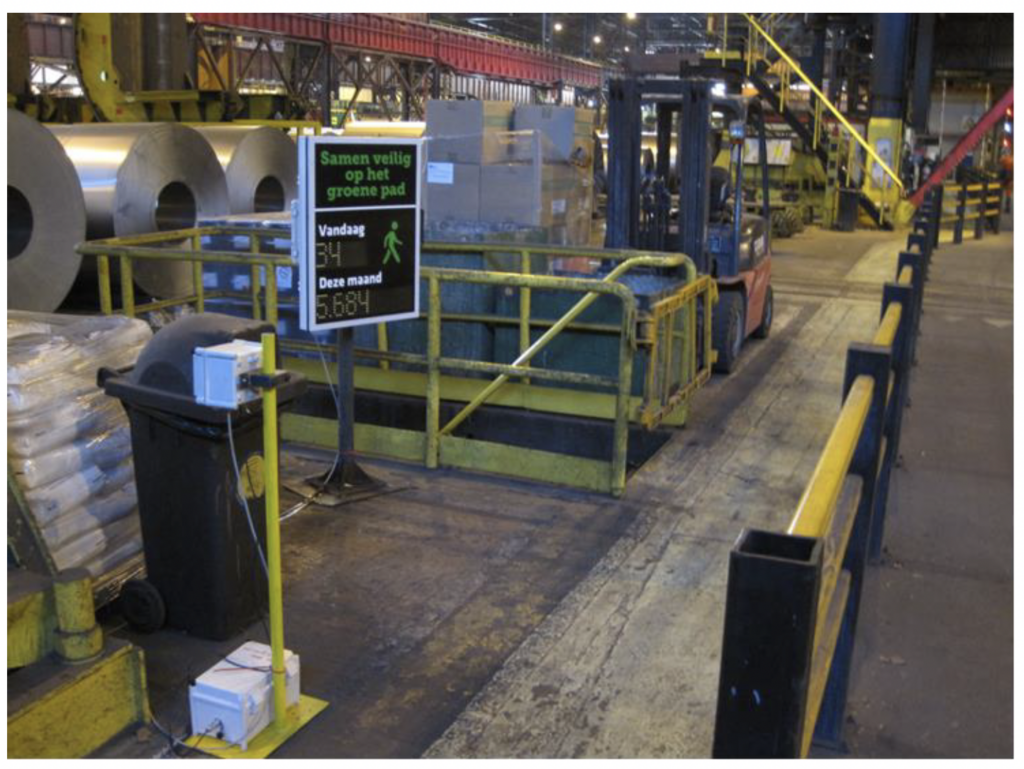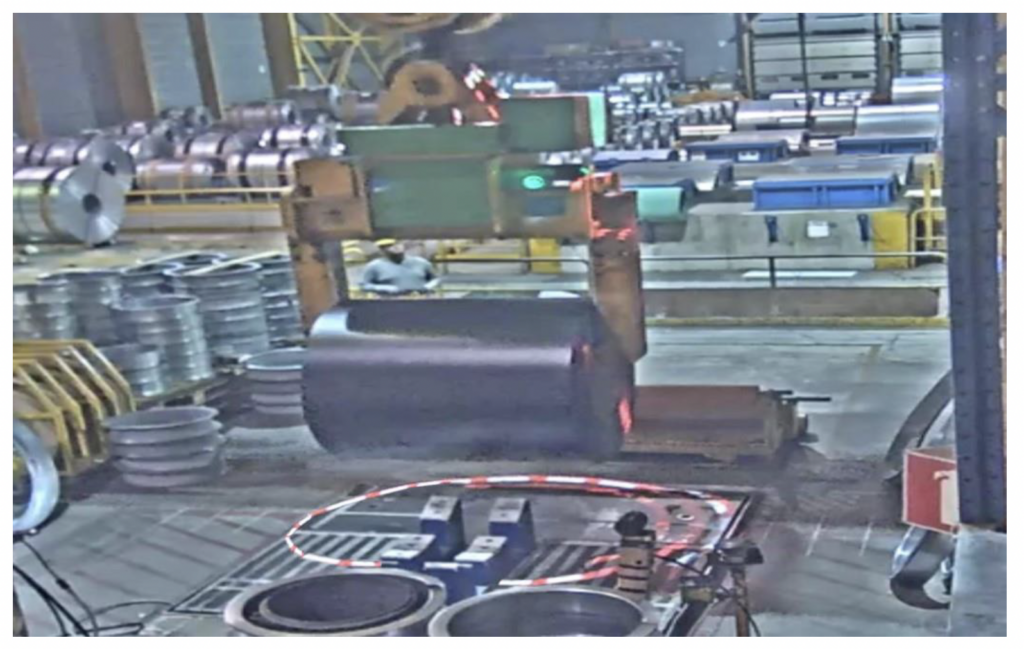Abstract
This study investigates nudging strategies’ effectiveness in enhancing safety practices related to suspended loads in industrial settings. Three field experiments featuring social proof, friction and salience nudges revealed that all interventions effectively increased the distance to suspended loads, promoting safer practices among workers. The social proof experiment found displaying the amount of colleagues following safe pathways increases its usage. The friction experiment found nearby placement of no-touch tools to be more effective than supervisory communication. In the salience experiment, a light projection beneath suspended loads is found to significantly promote keeping distance. These effects persisted over an extended period, signifying long-term safety potential. A layered nudging approach, combining horizontal and vertical strategies, emerged as a key recommendation. Horizontal nudging aims to mitigate risks through multiple simultaneous nudges, while vertical nudging amplifies the impact through a sequence of nudges at different organizational layers. Integrating nudging into current safety practices, guided by cognitive frameworks, offers a holistic approach to safety enhancement. This research contributes practical insights for designing effective workplace safety initiatives, emphasizing the multifaceted nature of safety behavior and the importance of leveraging psychological principles.
Keywords: nudging, industrial safety, safety behavior, layered nudging, bounded rationality
Costa, S., Duyck, W., & Dirix, N. (in press). Preventing hazardous exposure to suspended loads with nudge interventions. Journal of Loss Prevention in the Process Industries. Impact Factor: 3,6. Ranking Q2. PDF available here.



